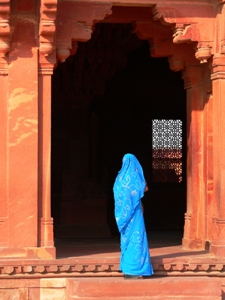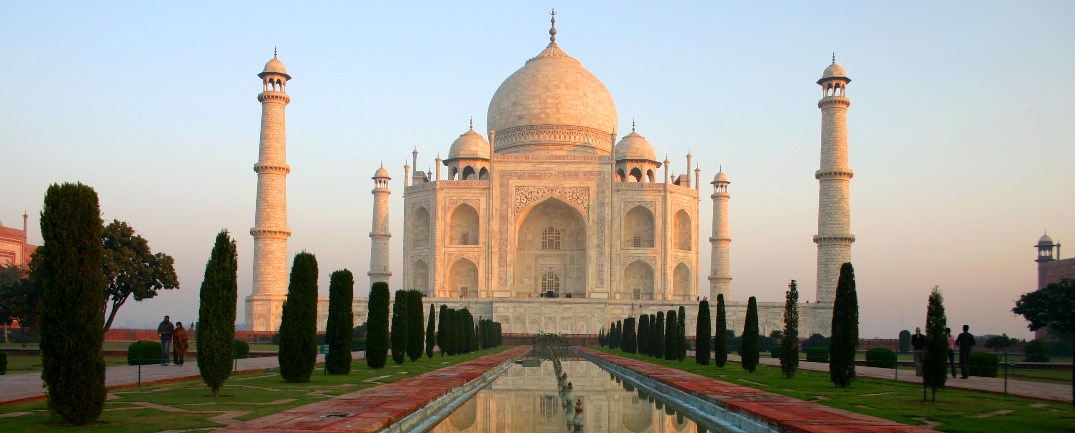The late morning sun blazes overhead as the dancing partners face off on the dry river bed. Standing tall and straight across from each other, he begins by bowing deeply and gracefully to his would-be-bride and waits anxiously for her reply. She hesitates and then demurely turns her head to the side with her eyes cast to the ground, signaling for him to begin. He raises his right leg and slams it hard to the ground as the dust begins to whirl around them. Then, in a feat of acrobatic majesty he leaps in the air and soars several feet above her head with his arms outstretched beckoning her towards him before he lightly touches back down on the ground. She responds by rising almost as high and letting out a cry as she reaches her apogee. There is so much riding on his next turn: he jumps high and twirls around in a full circle before coming back to face her as he lands. She bows her long neck and leaps again, grey feathers fluttering on the windless plain.
And so it was as I saw the cranes dancing in the early summer sun just below the Taj Mahal. The spirit of Shah Jahan and his Mumtaz so permeates this place that the cranes continue to dance as the lovers did in these gardens so many hundreds of years ago. Or perhaps the humans just did the same dance as the cranes have always done – an age-old dance that transcends species, class and kingdom.
From the moment one steps off the plane, India overwhelms the senses. Within her borders I have witnessed some of the most beautiful and some of the most tragic scenes I have ever encountered on my travels. From tigers on the prowl at Corbett to a roadside drama in which a driver chose to sacrifice the lives of a woman and her child instead of that of a cow, India tempts you to revel in her beauty and then rebukes you when you come too close. She is a harsh mistress, but one to whom you return time and again for comfort.
My experience of food in India spans the range of possibilities: from dining in good restaurants to Kashmiri takeout around intricately inlayed octagonal tables in someone’s home, to a lunch lovingly prepared by a friend to tea with bread and pickles in a country garden with peacocks strutting and rattling their tail feathers on the walls around us. Food is everywhere and the experience of sharing a meal held in high regard across the classes, castes and peoples of India.
Far and away the most surprising meal I’ve ever had in India was on the Delhi-Agra train. Dinner on the train – train food served in disposable aluminum containers that are kind of hefted at you as the waiter walks by your seat. Growing up in New York, one becomes used to good food sometimes being available in strange, inelegant surroundings. Still, on the train, where passengers roughly push past each other to quickly get to their reserved seats, I was not expecting to be served the best Lamb with Onions (do Piaz) I had ever had. To say that this curry was good was an understatement, the meat was buttery and the onions dripped off the fork into the dark, spicy, cumin and clove-laden sauce.
Interestingly, what we so blithely call “Indian cuisine” today is really the product of thousands of years of cultural evolution, foreign contact and trade from far-away shores. Archaeological evidence from the early Indus Valley civilization reaching back nearly 5000 years shows that beef, eggplant and sesame were important parts of the early Indian diet with development of the basic concepts of Ayurvedic dietary practices taking place at this time. Briefly, Ayurvedic practices divide foods into six tastes – sweet, sour, salty, pungent, bitter, and astringent. It also assigns specific roles to ingredients and their combinations to cure the ill and preserve health and balance. Towards the end of the Indus period, differences began to develop between northern and southern cuisines as more people migrated south and as we move into the Harappan civilization, evidence for the use and later cultivation of turmeric, cardamom, black pepper and mustard become more common.
During the Vedic period, major differences in the diet between the classes or castes also appeared, with vegetarianism popular amongst the Brahmin. Vegetarianism was further augmented by the rise of Buddhism in India around 600 BCE and spread of the religion across Asia over the next several hundred years, heightened cultural contacts with foreigners who traveled and traded along the Silk Road. Regular contact with Muslim traders was well established by around 1000 CE and a long period of Muslim rule began by 1300 that lasted until the mid-nineteenth century.
Ibn Battuta the great Moroccan explorer of the 14th century describes a meal served to him by in the court of Mohammed Bin Tughluk – one of the Northern Sultans – that included flatbread; large slabs of mutton and lamb; round dough cakes stuffed with sweet almond paste and honey – like the halva that is still enjoyed at the beginning of some meals in Central Asia; meat cooked with ghee, onions and young ginger; triangular pastries made of meat, nuts, onions, and spices – like modern samosas; rice pilaf with chicken – possibly a biryani; and lots of sweets for dessert. Battuta also states that rice, oranges, wheat, chickpeas and lentils were widely cultivated.
Europeans arrived as early as 1498, with the Portuguese leaving elements of their cuisines – such as the use of vinegar and lots of onions all along the western and southern coasts of the country. New World produce such as tomatoes, potatoes and chili peppers were introduced at this time. During the Mughal dynasty (1526-1857), we see Persian elements such as the addition of nuts like almonds and cashews and fruits such as raisins, apricots and dried plums to Indian food as well as the rise of kebabs and a much wider use of saffron. So you see, the next time you bite into a samosa to enjoy its spiced potato and pea combination or the next time you eat a fiery vindaloo, know that you are enjoying thousands of years of history in addition to some really delicious food.
 Whenever I arrived in India – passing through the mausoleum-like Gandhi airport on the way to somewhere else not included – I was usually coming in from a very rural area elsewhere on the subcontinent. Arriving in India always felt like going home to me. When friends met me at the airport, they always brought along garlands of flowered necklaces to welcome me. I’d turn my head to one side or another and revel in the fragrance of the flowers as we tooled around the city in an open jeep. Marigolds, tube roses and heavenly jasmine lay around my neck as I put up in my favorite hole-in-the wall hotel in Connaught to rest.
Whenever I arrived in India – passing through the mausoleum-like Gandhi airport on the way to somewhere else not included – I was usually coming in from a very rural area elsewhere on the subcontinent. Arriving in India always felt like going home to me. When friends met me at the airport, they always brought along garlands of flowered necklaces to welcome me. I’d turn my head to one side or another and revel in the fragrance of the flowers as we tooled around the city in an open jeep. Marigolds, tube roses and heavenly jasmine lay around my neck as I put up in my favorite hole-in-the wall hotel in Connaught to rest.
Fate or an unusually vengeful god always placed me in India before the rains liberated the country from its oppressive summer heat. Some mornings it would be 110 degrees Fahrenheit before the sun cleared the canopy and throughout the day, heat was likely to play tricks on your perception. One afternoon at Fatehpur-Sikri, the ancient Mughal capitol I was looking down on the giant pachisi (ludo) board from Akbar’s vantage point and out of the corner of my eye, it seemed as if a courtier jumped a square out of turn. I wandered through the rest of the red-rock ruins but kept on circling back to the board to see if the game was still on. Although difficult, the times before the monsoon are filled with expectation: the expectation of rain, expectation of release and the expectation of renewed life. Unconsciously, people place many of their hopes on the renaissance that comes with the rain. People are not the only ones who hope for the rains though – the cranes do too. (Words by Laura Kelley; Photo of the Taj Mahal at Sunrise © Ashwin82| Dreamstime.com; Photo of Woman in Blue Sari at Fatehpur-Sikri © Lester Woodward|Dreamstime.com)


The author’s ability to weave history, culture, geography, and culinary development is fascinating.